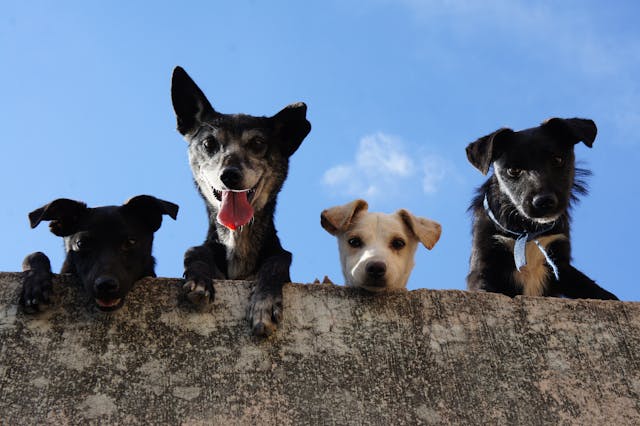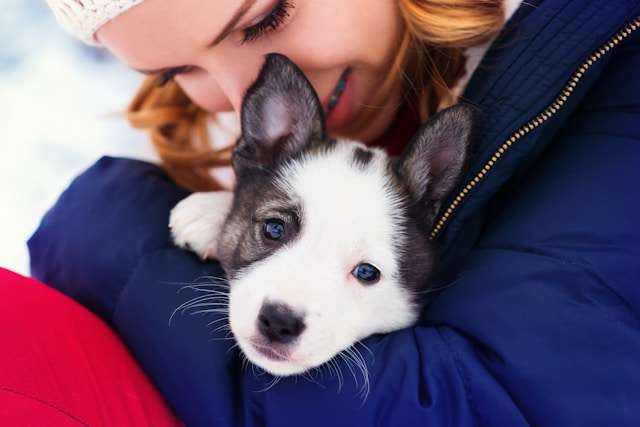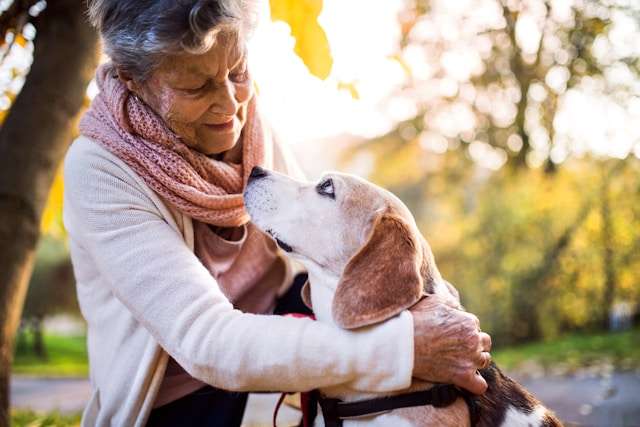Dog Communication with Humans
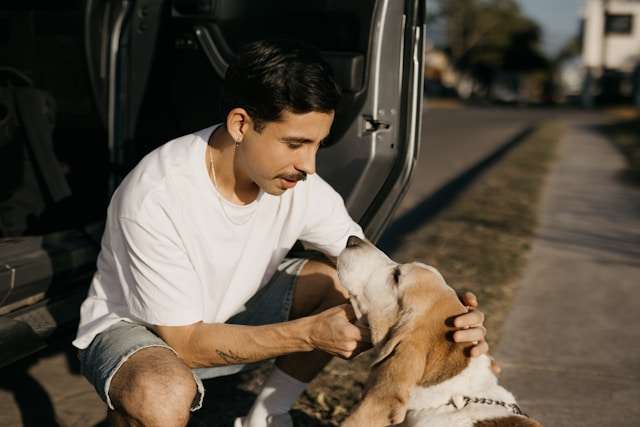
Dog Communication with Humans: My Experience Building a Stronger Bond with Savannah. Ever wonder how your dog tries to talk to you?
Dog communication with humans goes way beyond barking or whining—it’s a unique mix of body signals, tail wags, eye contact, and even little nudges.
Understanding your dog’s words is key to building a profound and happy bond.
I’ve learned this firsthand with Savannah. From her subtle ear twitches to how her paw lands on my knee when she wants attention, our connection grew when I paid closer attention and responded in ways she understood.
For dog owners, recognizing these signs can make everyday moments smoother and help avoid confusion or stress for you and your pup.
If you’re curious about reading your dog’s signals, you might find it helpful to learn more about subtle behaviors in dogs. Connecting on this level brings peace and trust into your home—something every dog owner wants.
Table of Contents
Key Takeaways
Dog communication with humans unfolds in small moments—each gesture, bark, or tail wag is a piece of a larger puzzle. When we truly pay attention, we discover a world of messages waiting for us. Here are the main things I’ve learned about understanding what our dogs say and how it shapes our bond.

Photo by Kaboompics.com
Dogs Use More Than Their Voice
While barking gets most of the attention, dogs use their whole body to “talk.” Savannah’s tail, ears, and eyes often reveal more than her barks ever could. As I learned, a wagging tail doesn’t always mean happiness.
Sometimes, it signals excitement, but depending on how the tail moves and the rest of the body looks, it can also signal frustration or nervousness. For an in-depth guide on reading these signals, I always recommend the tips in this resource on how to read dog body language.
Consistency Builds Trust
I quickly realized that dogs look for consistent cues. When my reaction to Savannah’s signals is steady, like always giving her space when she yawns or blinks slowly, she feels safer. If I respond the same way every time, she trusts that I understand her, strengthening our relationship.
Communication Is a Two-Way Street
It’s easy to focus on what your dog says, but our responses matter as much. Dogs read our body language too—how I stand, my tone of voice, and even my facial expressions guide Savannah. If I stay calm and predictable, she mirrors that calm energy. This dance of back-and-forth signals helps prevent misunderstandings and anxiety.
Every Dog Is Unique
What works for one dog might not work for another. For example, what “I’m excited” means for Savannah might mean something different for your pup. Watching closely for patterns is key. Paying attention to your dog’s quirks and unique body language makes your connection personal and much richer.
There’s some real science behind this—learn how to spot your dog’s body language with PetMD’s practical guide.
The Impact on Everyday Life
Being able to read Savannah’s signals changes how I handle everything from playtime to vet visits. Simple actions like recognizing if she’s overwhelmed or curious help me avoid problems and make our lives smoother.
Once you start tuning in to these daily cues, your dog will start “talking” to you more—sometimes all it takes is being open and attentive.
Understanding how dogs communicate with humans will change how you see your everyday life with your dog. Recognizing and responding to these signs turns basic pet care into a richer, more meaningful relationship.
How Dogs Naturally Communicate with Humans
Getting to know your dog means learning a new language—theirs. Dogs use their bodies, voices, and faces to share their feelings or wants.
With Savannah, I discovered how her signals shaped our walks or playtime and our whole connection. The more I learned about dog communication with humans, the more trust and fun we experienced together.
Understanding Dog Body Language: Ears, Tails, and Everything In Between
 Photo by JackerKun
Photo by JackerKun
From the top of their ears to the tip of their tails, dogs “talk” with their bodies. These cues can be subtle or bold, each sending its own signal.
Paying attention to Savannah, I’ve seen a relaxed, swaying tail during gentle play, and a stiff, upright tail when she’s on alert. Here are some familiar cues:
- Tail position: A loose wag means easygoing or friendly. A tucked tail signals fear. A stiff, vertical tail could mean your dog is alert or excited.
- Ear placement: Ears up and forward show interest or curiosity. Flattened ears may signal worry or submission.
- Posture: A playful bow (front end lowered, back end up) is a classic sign that your dog wants to play. A stiff, tense posture might signal discomfort or a warning.
- Facial expressions: Relaxed eyes and mouth show calmness. A wrinkled forehead or showing whites of the eyes means stress or nervousness.
Noticing these signals helps me avoid misunderstandings and comfort Savannah when she needs it most. If you’re curious about more detailed body cues, I learned much from Texas A&M’s guide on understanding your dog’s body language.
You’ll also find practical tips on tuning in to these signals—especially helpful for breeds with unique quirks—at 10 essential tips for reading dachshund body language.
Barks, Whines, and Growls: What Your Dog is Saying
Most people think barking is the main way dogs communicate, but vocalizations carry far more meaning. Each sound gives us a clue about what’s happening inside their head.
- Excited barks are usually higher-pitched, short, and often paired with a wiggling body.
- Whines signal a need, whether for attention, stress, or a bathroom break.
- Growls might sound scary, but they’re often just warnings or a way to say, “I need space.” Some dogs growl while playing—always watch body language to tell the difference.
- Howls can mean loneliness or a need to connect, especially in some breeds.
With Savannah, her soft whine at the door means she needs out, while sharp barks at the window signal a “stranger alert.” I pay attention to her tone, pitch, and what’s happening around her to figure out what she wants.
There’s science behind recognizing these cues—studies show dogs have distinct vocal patterns for play, warning, and excitement. Dogs also learn to use different sounds based on how we respond, further personalizing their “language” with us.
The Role of Eye Contact in Dog-Human Communication
Dogs and humans have a special connection through eye contact. When Savannah looks at me softly, it shows trust and warmth. Strong, direct stares can feel intense or make a dog nervous, but gentle, slow blinking often means relaxation and affection.
Eye contact can mean several things:
- Trust: Soft or “squinty” eyes, with relaxed features, show your dog feels safe and bonds with you.
- Dominance or uncertainty: A dog staring hard with a tense face might signal a challenge or stress. I try to break eye contact or soften my gaze to ease tension.
- Affection: When Savannah settles into a gaze with a wagging tail, it’s like a hug with her eyes.
Reading these cues adds another layer to dog communication with humans. For a complete list of what each look can mean, check out this practical breakdown of dog facial expressions and their meanings.
Building better communication starts with paying attention to these simple, everyday signs. Over time, they become the foundation for a stronger, happier bond with your dog.
Building a Stronger Bond Through Communication
Building a true partnership with your dog takes more than guessing what they want. Communication is the anchor that deepens your connection, primarily when you tune into what your dog is saying and how you respond.
Every day routines and intentional training turn simple signals into meaningful exchanges. That’s how I transformed my daily life with Savannah into a conversation instead of a guessing game.
Using Positive Reinforcement to Encourage Good Communication
 Photo by Sam Lion
Photo by Sam Lion
Positive reinforcement works wonders for teaching your dog how to express its needs and understand your cues. When Savannah needed to go outside, I started by praising her—and sometimes giving her a treat—every time she stood at the door or pawed at my knee.
Repeating this simple act made her confident that clear signals would be rewarded.
You can encourage more transparent communication and strengthen your bond using these positive training techniques:
- Give immediate rewards (treats, praise, or a quick game) when your dog expresses a need in a clear, acceptable way.
- Practice daily: Always respond warmly and consistently when your dog makes eye contact or comes when called.
- Introduce cue words (like “outside” or “hungry”) and pair them with the action. Savannah learned “water?” by watching me point to her bowl—now she’ll nudge it when she’s thirsty.
Consistency and repetition make these signals stick. Dogs learn that calm, clear communication gets them what they want, and you’ll notice less frustration.
For a deeper dive into the basics, you’ll find a helpful breakdown on positive reinforcement training at the Humane Society and step-by-step guides on training with positive reinforcement on PetMD.
Recognizing Your Dog’s Unique Communication Style
Every dog has their own “accent” when it comes to communication. Savannah’s special move is a gentle paw tap when she wants attention, while some dogs might tilt their head or gently nudge with their nose. Recognizing your dog’s specific signals takes observation and a bit of trial and error.
Here’s how I’ve learned to spot Savannah’s true intentions:
- Watch for patterns during daily routines. Maybe your dog circles before settling down, or whines in a specific pitch when they need to go out.
- Notice combinations: When happy or excited, dogs often use several signals together, like a wagging tail with perked ears and alert eyes.
- Respond promptly and see what works. If Savannah’s paw tap leads to a scratch behind her ears, she’ll repeat it. If I miss her cue, she might try a different approach, like sitting and staring until I notice.
Understanding that each dog’s “talking” is unique turns everyday life into an ongoing dialogue. By keeping a close eye on Savannah’s habits, I’ve been able to support her better, and she responds more confidently.
Paying attention to your dog’s style takes the guesswork out of dog communication with humans. Want more on building intense routines? My favorite guide on choosing the best dog treats for positive training at home has great tips. Learning these signposts transforms ordinary moments into rich, two-way conversations.
Common Misunderstandings in Dog Communication with Humans
Misunderstandings in dog communication with humans are more common than most owners realize. We want the best for our dogs, but we can miss what they truly mean—a wagging tail, a playful jump, or a yawn isn’t always what it seems.
I’ve made plenty of these mistakes with Savannah, but learning how to spot them deepened our bond and boosted her trust in me. Let’s break down the frequent pitfalls and what you can do to speak your dog’s language better.
When Good Intentions Go Wrong: Misreading Signals
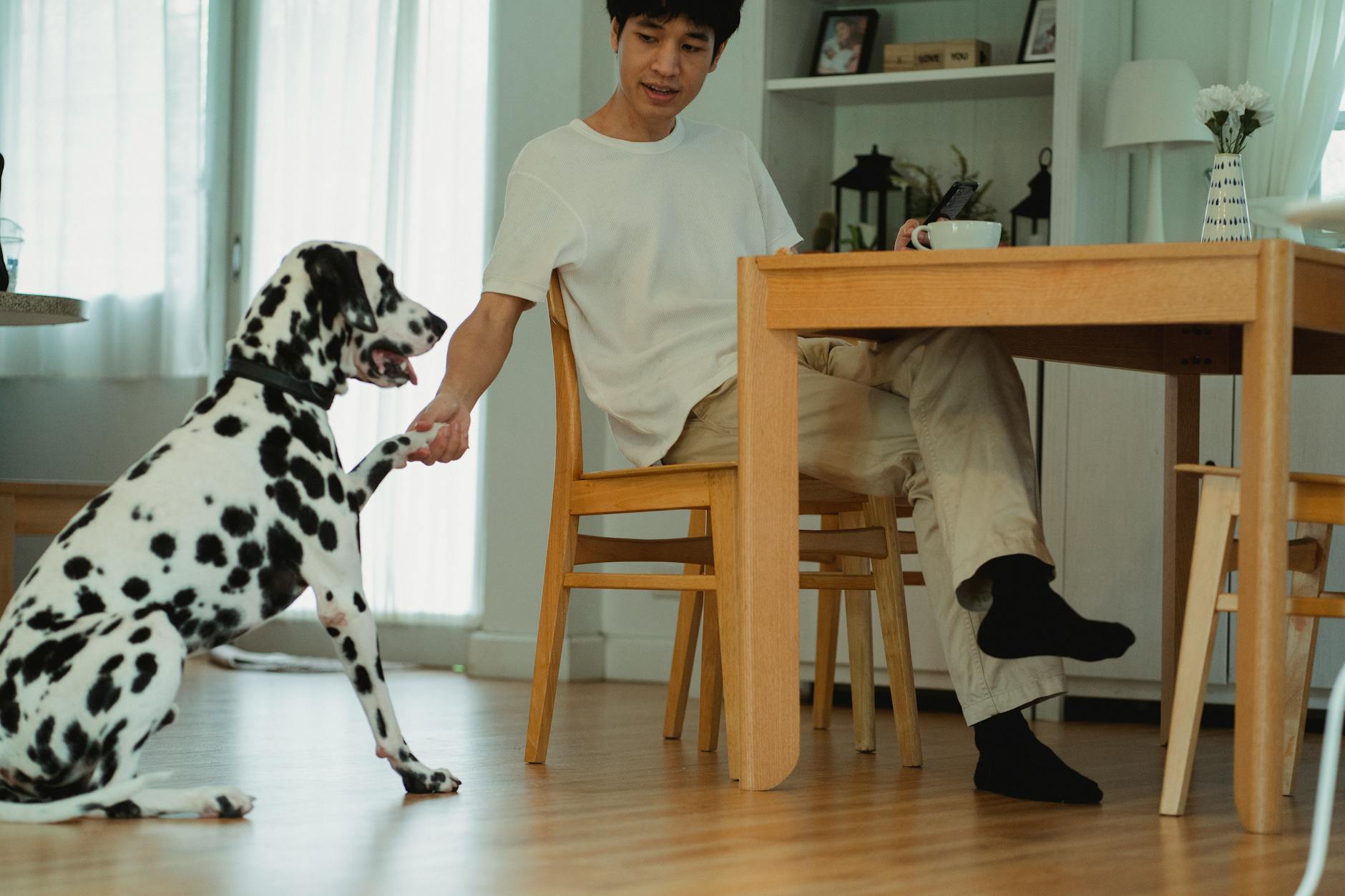
Photo by Bethany Ferr
Many owners think they’re picking up on their dog’s cues, only to misinterpret the message completely. Here are a few real-life mishaps plenty of us slip into:
- Thinking a wagging tail means “happy,” no matter what: Savannah’s tail once wagged stiff and high as a new visitor walked in. I assumed she was excited, but she was tense and unsure. The result? She barked and hid.
Solution: Pay close attention to the whole body. Pair a tail wag’s shape and speed with the dog’s posture. Loose hips and a swooping wag? Happy. Stiff body and fast, high wag? Nervous or overstimulated. - Believing every exposed belly is an invitation for a rub: Many believe a dog lying on its back wants a belly rub, but Savannah often did this to ask for space. Pushing for a tummy rub made her squirm away.
Solution: Look for relaxed limbs and a wiggly body for a real invitation. If your dog’s still, tucked, or avoids eye contact, skip the petting. - Mistaking growling as always “bad”: If Savannah let out a low growl during play, early on I’d scold or separate her. But dogs often growl to communicate boundaries, not aggression.
Solution: Treat growls as valuable information, not a problem to fix. Before reacting, determine the reason: overexcitement, fear, or play.
One key moment with Savannah sticks with me. For weeks, she yawned and looked away during new training routines. Initially, I mistook it for boredom.
Digging into her body language, I realized she was stressed and hoping for a break. Slowing down our pace made her more excited to train, and we started making real progress.
Learning more about the myths behind dog communication with humans helped me avoid common traps. This breakdown of common dog communication myths is a great place to spot what owners often get wrong.
Improving Clarity Between You and Your Dog
Misunderstandings don’t just come from us—dogs can misread us, too. It pays to be intentional with your signals and practice better listening.
Here’s what I started doing (and recommend every owner try):
- Use consistent words and actions: Use the same word and gesture for important events, like “sit,” “outside,” or “leave it.” Dogs pick up patterns fast, but only if we stick to one signal.
- Watch the timing: Give feedback immediately—if your dog sits, praise them immediately. Waiting even a few seconds confuses the association.
- Mind your body language: Stand straight and relaxed if you want your dog to come closer. Leaning over or approaching too quickly can feel threatening, even if you’re happy.
- Practice “reading” your dog daily: Take a few minutes every day to observe your dog’s natural behaviors. Notice how their signals change depending on where you are or who’s around.
- Set your dog up for success: Avoid mixed signals by not rewarding unwanted behaviors. For example, don’t offer treats when your dog jumps up for attention—wait until they’re calm to reward.
For Savannah and me, clarity started with fewer mixed signals. I practiced soft eye contact and timely cues. Over time, she stopped second-guessing my intentions, and those little daily “miscommunications” nearly disappeared.
This guide covers five myths about your dog’s body language, so you can learn more about signals you might be missing and how dogs interpret human cues. It’s a simple resource that helped sharpen my awareness as Savannah and I grew closer.
Building better dog communication with humans starts by avoiding guesswork and giving every message—yours and your dog’s—the attention it deserves.
The Science Behind Dog Communication with Humans
Dogs have a fantastic ability to connect with us, and it’s no accident. How dogs communicate with humans is rooted in thousands of years of living side-by-side, from early campfires to modern couches.
Looking at Savannah, it’s clear she’s more than a pet—she’s tuned in, picking up my emotions, gestures, and words.
It all started with domestication, but science now shows our bond runs deep, almost like how children rely on parents to feel secure and heard.
Genetics and Domestication: Why Dogs Understand Us
 Photo by Vitaly Gariev
Photo by Vitaly Gariev
The story of dog communication with humans starts with domestication. Wolves that didn’t mind living near people thrived, and over thousands of years, these early “proto-dogs” began to change—not just how they looked but also how they thought.
Scientists have found that dogs are naturally attracted to people and more tuned to our cues than even the smartest wolves.
In a detailed study, dog puppies showed a clear preference for humans, were quick to lock eyes with us, and followed gestures better than wolf pups raised in similar settings.
This skill isn’t random—domestication selected for these “communication genes,” much like breeding for floppy ears or curly tails. For more on how cooperative communication evolved in dogs, look at this study on Cooperative Communication with Humans Evolved to ….
What’s interesting is that domesticated dogs don’t just spot what we do—they want to stick close, watch, and read us.
Another research project observed that dogs raised with lots of human contact were even more drawn to stay near people, proving that experience improves their people skills over time.
Researchers summarized it as follows: Domestication helped dogs succeed by making them want to be with and understand us. You can see those results here on The Effect of Domestication and Experience on the Social...
Dogs Reading Human Cues: What the Research Shows
Dogs use a mix of senses—sight, smell, and even their memory—to interpret what we’re saying, often with no words. I see this every day with Savannah.
She picks up on my gestures (like pointing or clapping), recognizes words after a few repeats, and especially watches my face for clues about my feelings.
- Gestures: Dogs are experts at reading our body language, sometimes better than chimpanzees. They understand simple gestures like pointing to a bowl (“Dinner’s here!”) or nodding toward a door (“Let’s go out!”).
- Words: With repetition and positive feedback, Savannah learned to react to “sit,” “outside,” and “water.” She even picks up on my tone, turning playful with a gentle voice or calming when I speak softly.
- Emotions: Dogs pay attention to eyes, mouth, and even posture. When I’m stressed, Savannah sits closer, head slightly tilted—her way of asking, “Are you okay?” This mirrors how children seek parental cues and reassurance.
- One study associated how kids respond to dogs with their attachment to parents. The bond children feel with their dogs is emotional and communicative, as detailed in this piece on Behavioral and Self-report Measures Influencing Children’s ….
Dogs use these abilities daily to build a two-way conversation with us. Whether Savannah’s nudging my hand for pets or following my finger to a dropped treat, it all comes back to the science of dog communication with humans.
For a breakdown on how dogs can learn to read families just like children do, see this study about Children’s interaction with an animal when having an Animal ….
If you’re curious how to strengthen these communication skills, you’ll find more real-world examples and tips on reading dog cues in this guide to 10 essential tips for reading dachshund body language that’s just as helpful for any breed. Every head tilt, wag, and stare is a science-backed step in building that unique human-dog language.
Frequently Asked Questions About Dog Communication with Humans
Dog owners often have questions about dog communication with humans. Understanding your pup’s language helps avoid confusion and builds trust.
Below, I’ve gathered some of the most common questions I’ve heard and my tried-and-true advice, so you can better “talk” with your dog and respond to their needs.
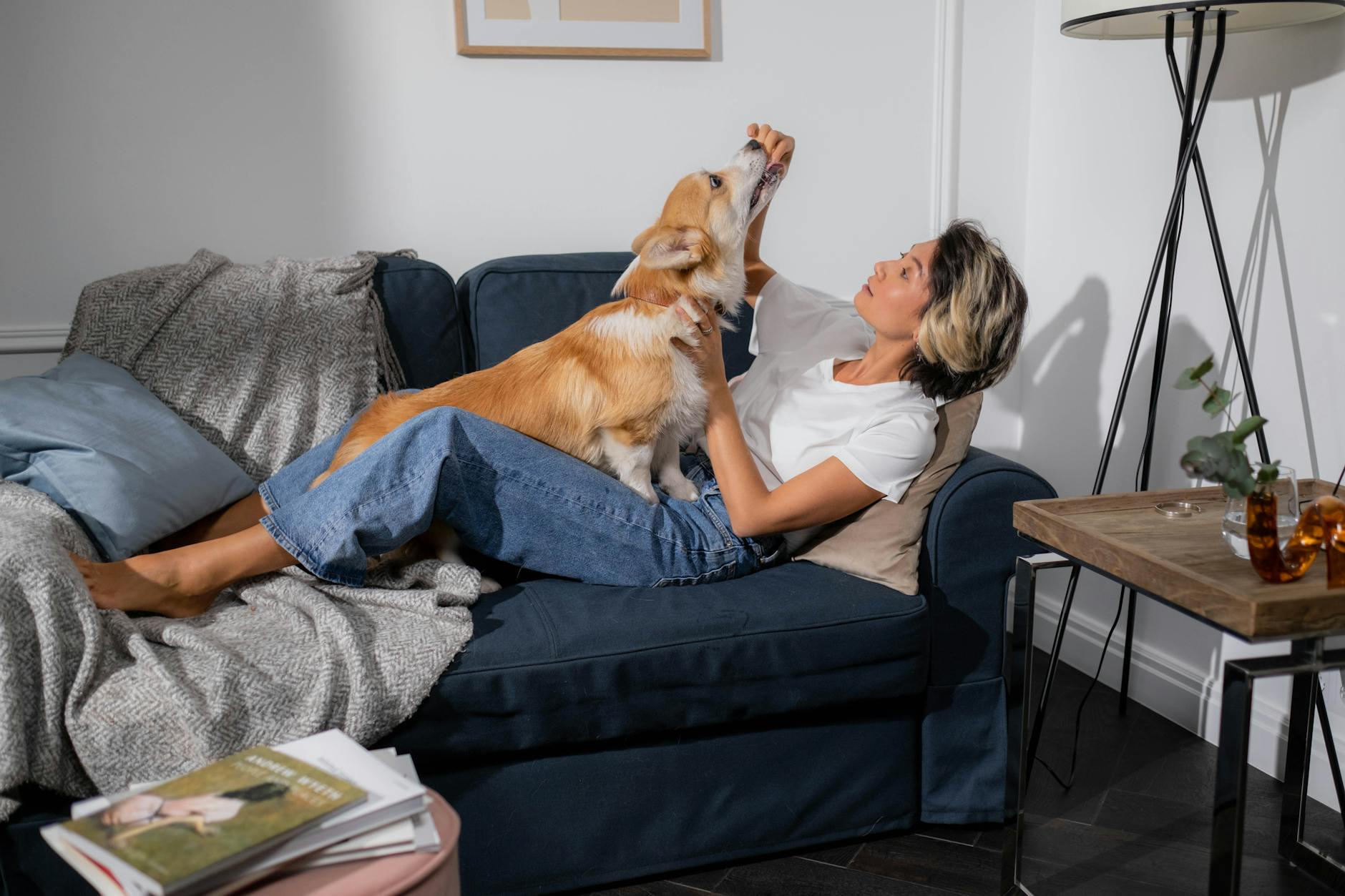
Photo by Ron Lach
Why Do Dogs Howl or Whine at Certain Times?
Dogs communicate through a wide range of sounds; howling and whining serve a purpose.
- Howling can signal loneliness, the need for attention, or a response to unusual sounds (like sirens). Sometimes it’s in their nature—certain breeds are just more vocal.
- Whining often happens when a dog feels anxious, wants something (like a walk), or seeks emotional support.
Paying attention to the context of the sound gives you a clearer picture. If you notice your dog whining in new situations or when separated from you, it may be a gentle plea for comfort.
More details about vocal expressions and their meanings in this article cover the importance of dog-human communication.
How Can I Tell If My Dog Is Happy or Stressed?
Look beyond just wagging tails. Happiness usually shows in a relaxed body, soft eyes, and playful behaviors like the classic “play bow.” Stressed dogs often show tense muscles, tucked tails, and avoid eye contact. You might also see yawning, lip licking, or pacing when they feel uncertain.
Learning to read the whole body keeps you in tune with your dog’s mood. The SPCA of Northern Nevada provides a helpful breakdown on how dogs use body language to communicate.
Can My Dog Understand What I’m Saying?
Absolutely—dogs catch on to much more than we sometimes think. They quickly learn words for basic needs (like “walk” or “treat”) and often pick up on your emotional state by watching your tone, gestures, and posture. Consistency is key; using the exact words and signals helps your message land.
Research shows dogs are natural pros at reading human cues, as discussed earlier in my article. Keeping communication clear and simple is your best approach.
What Should I Do If My Dog’s Signals Are Confusing?
Dogs sometimes send mixed messages, especially when they’re learning or feel nervous. If you’re unsure what your dog wants, check their body language and consider what’s happening around them. Don’t be afraid to experiment—offer a break, a treat, or some quiet time and watch their response.
You can always deepen your understanding of canine signs by reading trusted sources or scrolling through this article for more tips on how dogs communicate and how we can respond.
Does My Dog Communicate Differently With Strangers?
Yes—many dogs have a special “language” for their family and another for people they don’t know.
You may notice your dog becoming more reserved or alert when you have unfamiliar visitors, using new signals or different body language.
Giving your dog time and space helps them gain confidence and adjust their communication style to new faces.
Where Can I Find More Tips for Reading My Dog’s Signals?
Every dog is unique, so wanting extra advice as you learn their cues is normal. For more tips tailored to specific breeds or behaviors, check out my practical guide on reading dachshund body language. These insights work for all breeds and can help you notice even the smallest signals in your dog.
Understanding dog communication with humans doesn’t stop with these questions, but being curious and open is the best way to grow your bond. Keep notes, stay observant, and soon enough, you’ll “hear” what your pup is saying loud and clear.
Conclusion
Building better dog communication with humans has changed my life with Savannah—our connection now feels natural, reliable, and full of trust.
Noticing her cues makes daily routines easier and helps prevent stress or confusion. Every ear twitch or soft whine tells me something new.
Improving communication isn’t about being perfect—it’s about paying attention and responding in ways that work for you and your dog.
The more I listened to Savannah, the more confident and happy she became. This process turns a simple pet-owner relationship into a true partnership.
If you want to strengthen your bond, try practicing some of these skills during playtime or training. Stay curious, keep learning, and see how your dog responds.
For more practical ways to use positive reinforcement, explore my guide on choosing dog treats for home training. Your attention, patience, and gentle feedback do more than words can say.
Thank you for reading about my experience. Do you have a story about learning to “talk” with your dog? Please share it with other dog owners, and let’s help each other grow these special connections.

